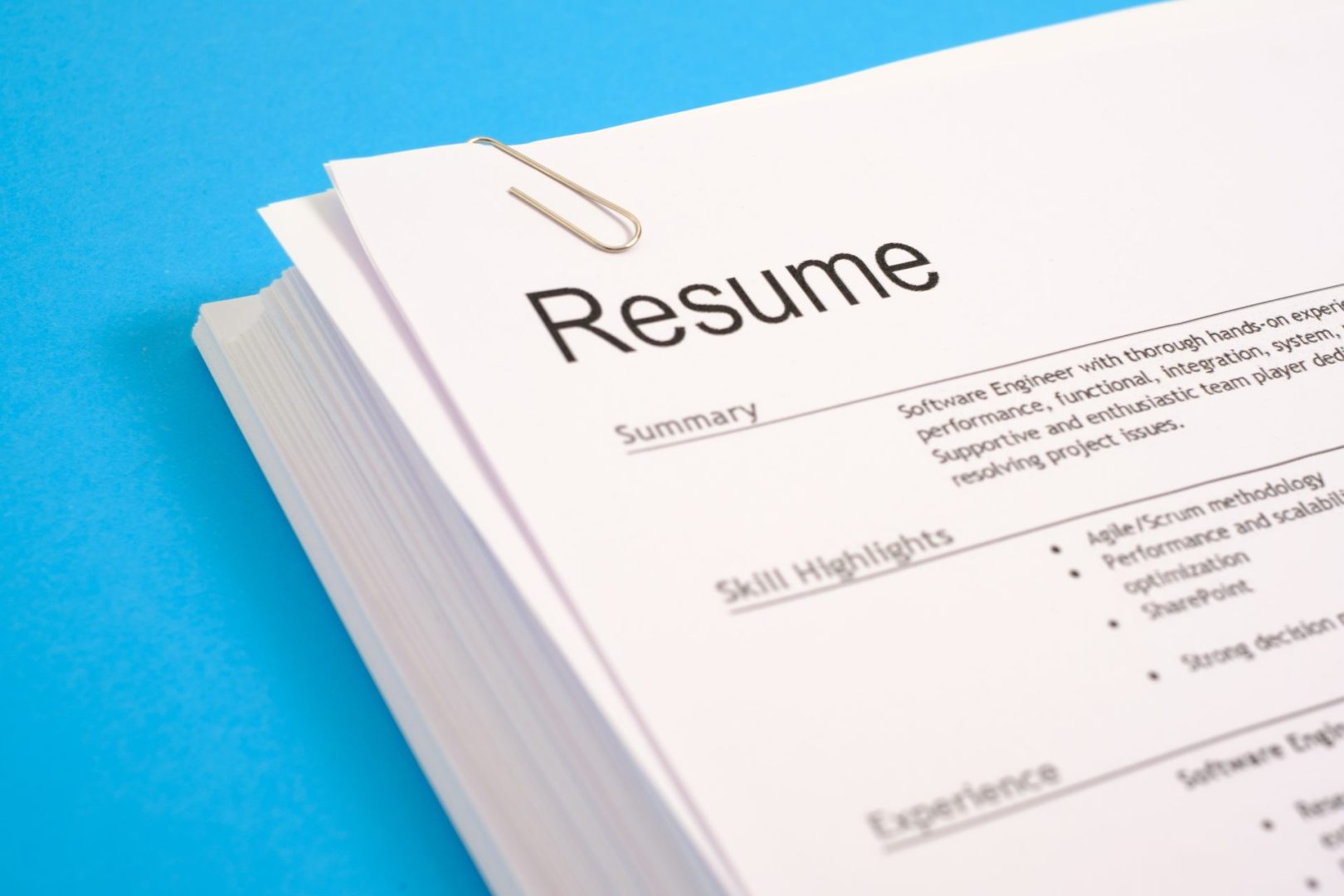The modern job market presents a daunting reality for countless professionals seeking new opportunities. Hiring managers routinely face towering stacks of applications, with popular positions attracting hundreds of qualified candidates within days of posting. In this sea of similar backgrounds and comparable qualifications, the challenge extends far beyond simply being qualified for the role.
Standing out requires strategic thinking and deliberate choices that capture attention within the brief moments most recruiters spend scanning each application. The average resume receives less than seven seconds of initial review time, making every word, format choice, and strategic decision critically important for advancing to the next stage of consideration.
Understanding what makes hiring managers pause, engage, and ultimately remember specific candidates can transform an overlooked application into an interview invitation. The difference often lies not in dramatic overhauls or expensive redesigns, but in thoughtful refinements that demonstrate professionalism, attention to detail, and genuine understanding of employer needs.
The current landscape of resume competition
Today’s job market operates at unprecedented speed and scale. Digital application systems allow companies to collect massive volumes of applications within hours of posting positions, creating intense competition for roles across all industries and experience levels. This technological efficiency, while beneficial for reaching larger candidate pools, has fundamentally changed how employers approach initial candidate screening.
Automated tracking systems now handle the first round of resume filtering, scanning documents for specific keywords, formatting compatibility, and basic qualification markers before human eyes ever see the content. This technological barrier adds another layer of complexity to the resume creation process, requiring candidates to optimize for both digital scanning and human engagement.
The sheer volume of applications means that even exceptional candidates may never receive proper consideration if their resumes fail to navigate these initial screening processes effectively. Success requires understanding both the technical requirements of modern hiring systems and the psychological factors that influence human decision-makers during those crucial first moments of review.
1. Strategic keyword optimization without stuffing
Modern hiring processes rely heavily on applicant tracking systems that scan resumes for specific terms and phrases related to job requirements. However, successful keyword integration requires finesse and strategic placement rather than obvious manipulation that can appear desperate or inauthentic.
The most effective approach involves carefully analyzing job descriptions to identify recurring themes, required skills, and preferred qualifications, then naturally incorporating these elements throughout the resume content. This integration should feel organic within the context of actual accomplishments and experiences rather than appearing as an obvious attempt to game the system.
Industry-specific terminology demonstrates familiarity with professional language while helping resumes pass through automated screening filters. Using the same terms employers use in their job postings creates immediate alignment and suggests cultural fit within the organization’s communication style.
Technical skills sections provide natural opportunities for keyword inclusion while maintaining readability and professional appearance. Rather than simply listing every possible relevant term, focus on the most important qualifications mentioned in target job descriptions, ensuring each included skill can be supported with concrete examples if questioned during interviews.
Professional summary sections offer prime real estate for incorporating high-value keywords within compelling narrative content. This approach allows candidates to address key qualifications immediately while creating engaging introductions that encourage continued reading.
2. Quantified achievements that demonstrate impact
Numbers provide concrete evidence of professional capability and create memorable anchors that help hiring managers retain information about specific candidates. Quantified accomplishments stand out dramatically against vague descriptions of responsibilities and duties that characterize most resume content.
Revenue generation, cost savings, efficiency improvements, team leadership, and project completion metrics offer powerful ways to demonstrate value creation in previous roles. Even positions that don’t directly involve sales or budget management typically include opportunities for quantifiable impact measurement.
Time-based achievements such as meeting deadlines, reducing processing times, or accelerating project completion rates provide concrete evidence of reliability and effectiveness. These metrics particularly appeal to employers facing tight schedules or resource constraints in their current operations.
Percentage improvements in various metrics demonstrate growth mindset and continuous improvement capabilities. Whether describing productivity increases, error rate reductions, or customer satisfaction improvements, percentage-based achievements create compelling evidence of professional development and impact.
Volume-based accomplishments such as managing team sizes, handling customer loads, or processing transaction quantities provide scale context that helps employers understand the scope of previous responsibilities and transferable skills.
3. Visual hierarchy and strategic formatting
Professional presentation significantly influences first impressions, with clean, organized formatting suggesting attention to detail and professional competence. Strategic use of white space, consistent formatting, and logical information flow create positive user experiences that encourage thorough review.
Font selection plays a crucial role in readability and professional appearance. While creative fonts might seem attention-grabbing, traditional choices like Arial, Calibri, or Times New Roman ensure compatibility across different viewing platforms and demonstrate conservative professional judgment.
Section organization should follow logical priority structures that highlight the most relevant information first. For most professionals, this means leading with professional summary, followed by relevant experience, key skills, and education. However, recent graduates or career changers might benefit from alternative arrangements that emphasize their strongest qualifications.
Consistent formatting throughout the document creates professional polish and easy navigation. This includes uniform date formats, consistent bullet point styles, standardized spacing, and aligned text elements that create visual harmony and demonstrate attention to detail.
Strategic use of bold text and subtle formatting variations can guide reader attention toward the most important information without appearing cluttered or unprofessional. The goal involves creating clear information hierarchy while maintaining clean, readable presentation.
4. Tailored content for specific opportunities
Generic resumes that attempt to appeal to every possible opportunity often fail to strongly connect with any specific employer’s needs. Customization demonstrates genuine interest in particular roles while addressing specific requirements and company cultures.
Job description analysis reveals priority qualifications and preferred experience that should receive prominent placement in tailored resumes. This doesn’t require complete document rewrites, but rather strategic emphasis adjustments that align personal strengths with employer priorities.
Company culture research helps identify values, communication styles, and organizational priorities that can inform language choices and emphasis areas throughout resume content. This cultural alignment suggests compatibility and reduces hiring risk from the employer perspective.
Industry-specific requirements vary significantly across different sectors, making targeted resume versions essential for professionals pursuing opportunities in multiple fields. The same core experiences might be presented differently depending on whether the target role emphasizes technical skills, leadership capabilities, or customer service excellence.
Recent project relevance can dramatically improve application strength when specific accomplishments directly relate to target role responsibilities. Highlighting these connections helps hiring managers immediately understand value proposition and reduces cognitive load required to assess candidate suitability.
5. Strategic positioning and professional storytelling
Transforming resume content from simple job history documentation into compelling professional narrative creates emotional engagement that helps applications remain memorable throughout the hiring process. This approach requires strategic thinking about career progression and value proposition communication.
Professional summary sections provide opportunities to establish unique value propositions that differentiate candidates from similarly qualified competitors. Rather than generic introductions, these sections should capture specific strengths, career focus areas, and professional personalities that align with target role requirements.
Career progression storytelling demonstrates growth mindset and advancement capability through strategic presentation of increasing responsibilities, expanding skill sets, and evolving leadership roles. This narrative approach helps hiring managers envision continued development potential within their organizations.
Problem-solving examples throughout experience descriptions showcase analytical thinking and practical application of professional skills. Rather than simply listing job duties, effective resumes describe challenges faced, actions taken, and results achieved in ways that demonstrate transferable problem-solving capabilities.
Leadership and collaboration evidence appears particularly valuable in today’s team-oriented work environments. Even individual contributor roles typically involve some level of collaboration, mentoring, or project leadership that can be highlighted to demonstrate interpersonal effectiveness and growth potential.
Professional development and continuous learning indicators suggest adaptability and commitment to skill enhancement. This might include relevant training completion, industry certification achievement, or self-directed learning initiatives that demonstrate proactive professional growth.
Implementation strategies for immediate improvement
Successful resume enhancement requires systematic approach and careful attention to detail throughout the revision process. Rather than attempting all improvements simultaneously, focus on one area at a time to ensure quality implementation and maintain document coherence.
Content audit represents the logical starting point, involving thorough review of current resume content to identify areas for quantification, keyword optimization, and strategic repositioning. This process often reveals overlooked achievements and transferable skills that deserve prominent placement.
Multiple version creation allows for targeted customization without starting from scratch for each application. Maintaining master resume with comprehensive information alongside tailored versions for specific industries or role types creates efficiency while enabling appropriate customization.
Feedback collection from trusted professional contacts can provide valuable perspective on resume effectiveness and areas for improvement. Fresh eyes often identify unclear sections, missing information, or formatting issues that become invisible to document creators after extensive revision work.
Regular updates ensure resume content remains current and relevant as career progression continues. Rather than major overhauls during active job search periods, ongoing maintenance creates readiness for unexpected opportunities while reducing stress during transition periods.
The competitive nature of today’s job market demands strategic thinking and deliberate action throughout the application process. By implementing these targeted improvements, professionals can significantly increase their chances of advancing beyond initial screening stages and securing interview opportunities.
Success in resume creation requires balancing technical optimization for automated systems with compelling content that engages human decision-makers. This dual focus, combined with consistent professional presentation and strategic customization, creates applications that stand out in crowded candidate pools while accurately representing professional capabilities and potential contributions.














